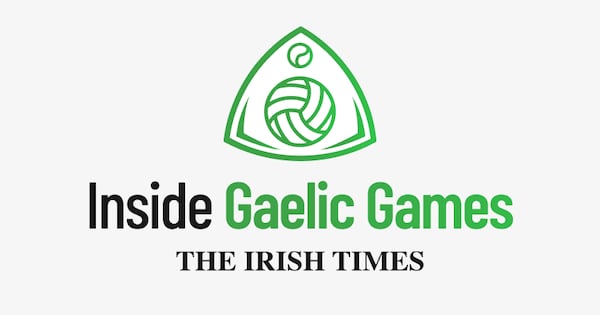For generations, long before Marvel comics, the hurlers of Cork and Tipperary have been mass producers of superhero fantasy. In this case maybe some of it was true, though that was neither here nor there. “This is the west, sir,” Maxwell Scott said to Ransom Stoddard in The Man Who Shot Liberty Valance. “When the legend becomes fact, print the legend.”
Sport now is so wedded to statistics and hard data and cold-eyed analysis and sober reflection and wall-to-wall camera surveillance, that lies and half-truths have a hard time. Is it really more enjoyable to know what actually happened? Don’t all the best stories start with “you’re never going to believe this”?
Cork and Tipperary have always been partial to the stuff that makes myths. As a reflex, the best matches they played over the years were exposed to hysterics. History was always looking over their shoulder, like a teacher checking homework. It wasn’t unusual for gold stars to be awarded on the spot.
When they played a cracking Munster final in 1960, for example, this was how John D Hickey opened his report in the Irish Independent: “Although the passage of time hallows memories and causes us to add colour to great games of the past, many will state without reserve that never have they seen such a fierce combat [as this].
Club football round-up: Scotstown and Newbridge semi-final abandoned due to pitch conditions
Ballyhale Shamrocks shake off Clough Ballacolla challenge to return to Leinster decider
Rory O’Connor leads from the front as St Martin’s reach their first Leinster final
The Kerry paradox: Why the aristocrats of intercounty football never dominate club scene
“This was a game that made one marvel at the hardihood of the human frame,” he continued. “Never have I seen men on a hurling field so utterly contemptuous of their personal safety when duty called. Having seen every Munster final since 1922 I feel entitled to tie a tag on this match: this must have been as furious a Munster final as was ever played.”

When they produced two more thrillers in 1991, Paddy Downey on these pages described the drawn Munster final as “a wonder of wonders.” Paddy was in his early 60s by then and may have thought he had seen it all. He was happy to be seduced again. “It burned like a furnace from start to finish,” he continued. “Has there ever been better? Most unlikely.”
That was a recurring theme. On the stairway to eternity, Cork and Tipp matches were forever jostling for favour. There were plenty of turkeys too over the years, but those games were thrown on the slag heap of memory.
What is indisputable is how Cork and Tipp matches have fired emotions. For big matches – just like this week, the biggest of all – it was always a golden ticket. When they met in 1961, 60,177 people crammed into what is now the Gaelic Grounds, still a record for a Munster final.
Twelve years earlier, Killarney couldn’t hold the crowd. “The Fitzgerald Stadium stewards were utterly unprepared for the deluge of supporters that had descended on them,” wrote John Harrington in his biography of John Doyle.
“One gate was ripped from its hinges and a torrent of supporters quickly flooded through it, while hundreds more desperately scaled the walls. The official attendance was 40,000, but up to 20,000 more forced their way into the ground without paying and all around the stadium ugly scenes were breaking out between both sets of fans.”

Val Dorgan sat on one of the perimeter walls “witnessing the most chaotic scenes I have seen in a major sports fixture,” he wrote in his biography of Christy Ring. “Cork-Tipperary encounters invariably produced the odd digging match on the terraces but there was a total breakdown in stewarding and crowd discipline.
“At the throw-in one spectator tried to strike the Tipp captain Séan Kenny and was deposited on the sideline by Jack Lynch. As the game progressed Tipp went three goals up and the Cork crowd cascaded down off the embankments and onto the field. They lined the sidelines and menaced the Tipp goal.”
More than 40 years later, when Tipp beat Cork in a Thurles replay, six minutes of stoppage time was played by Terence Murray because of “mini pitch invasions”, including a man in wheelchair. The madness was passed down.
But even the unsavoury stuff added to the folklore and the mystique. Cork-Tipp championship matches were “events” before that word was kidnapped and tortured by the advertising industry.
For everybody else in the championship, though, the swooning around Cork-Tipp matches must have been intolerable at times. It was elitist in every sense. There was only room on that pedestal for two.
This was the kind of stuff that Ger Loughnane and his wrecking crew railed against with every atom of their being. Cork and Tipp and the Munster final were instruments of their oppression. Of all the Munster finals played, 120 involved either Cork or Tipp; 34 involved both of them. At the last count they have a combined total of 97 Munster titles.

When hurling changed, though, the relationship between Cork and Tipp was shuffled onto a different footing. It no longer towered over the Munster championship. In hurling’s more egalitarian society, some counties broke out of poverty.
Most years, since the turn of the century, there were other games that had a greater impact on the shape of the championship and the destination of the title. Some of the magnetism waned. When Cork and Tipp both landed in a losers’ group in the 2007 championship, fewer than 13,000 turned up in Thurles. In the first season of the Munster round robin in 2018 the crowd was just over 22,000. It is now 19 years since they last met in a Munster final, the longest such hiatus in their shared history.
All around them was an altered landscape. Tipp and Cork have six All-Irelands between them since the turn of the century; Limerick and Clare have seven. In the previous 25 years, the score was 9-2. In the 25 years before that, it was 13-1.
And then this match lands from outer space. The historical overtones of next Sunday’s final are not lost on anybody. When Tipp emerged from the wilderness in Killarney in 1987, after 16 miserable years without a Munster title, it was Cork who stood in their way. Now Cork are trying to close the book on 20 tortuous years without an All-Ireland and Tipp are the last impediment, staring back with a murderous glint in their eye.
The mythologists will have a hard time dreaming up a sequel.
















